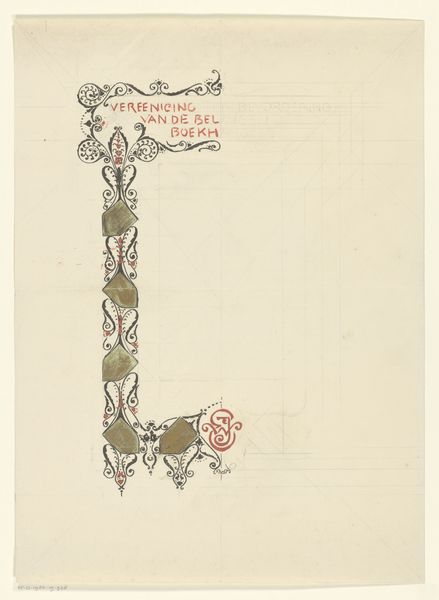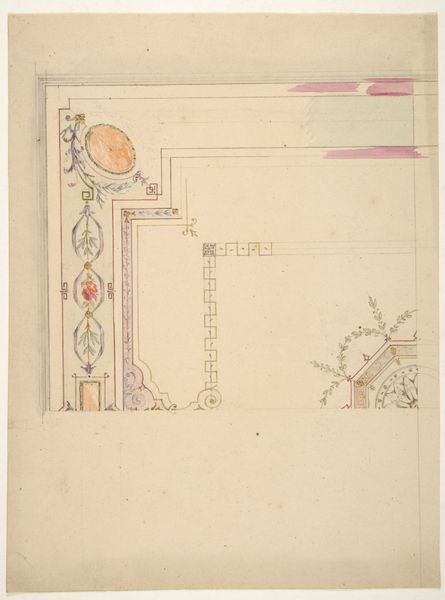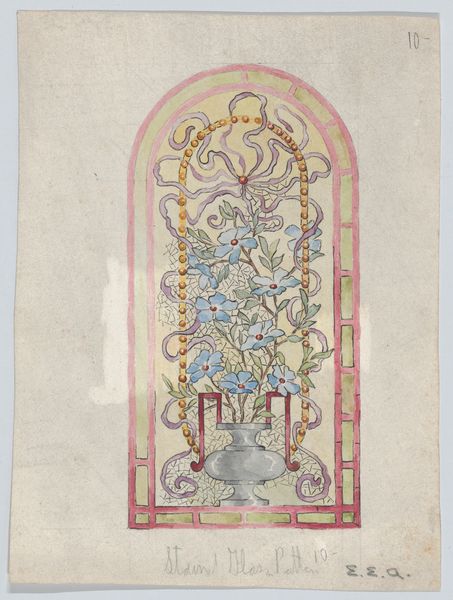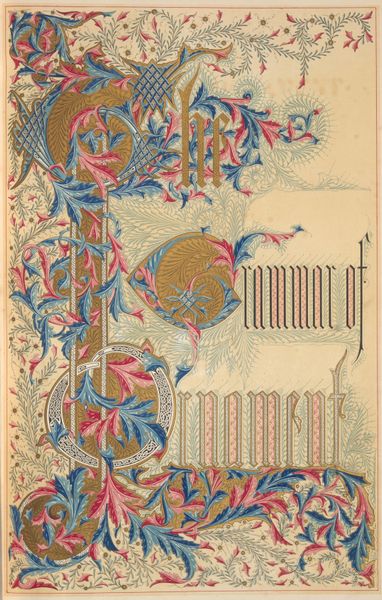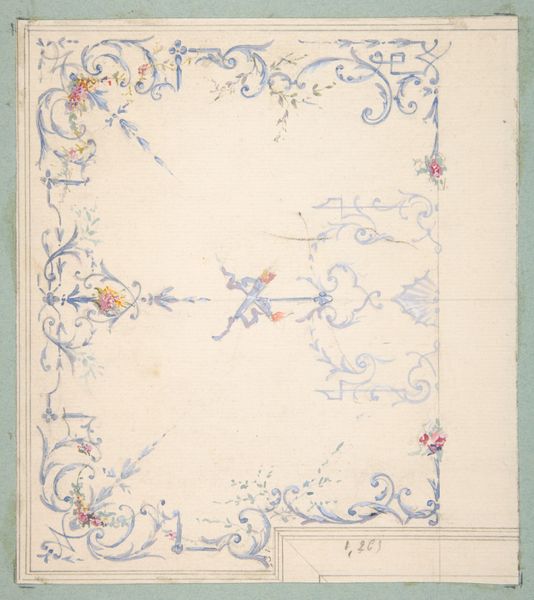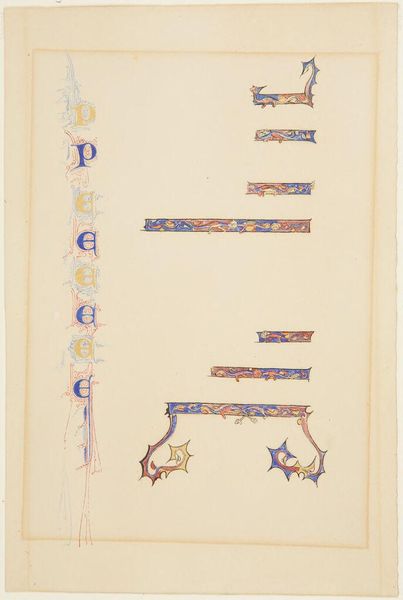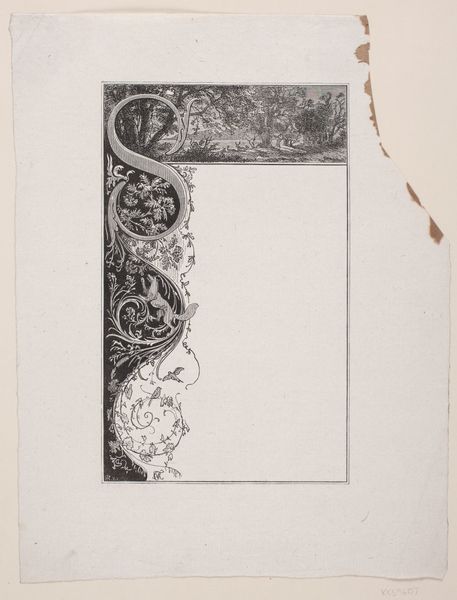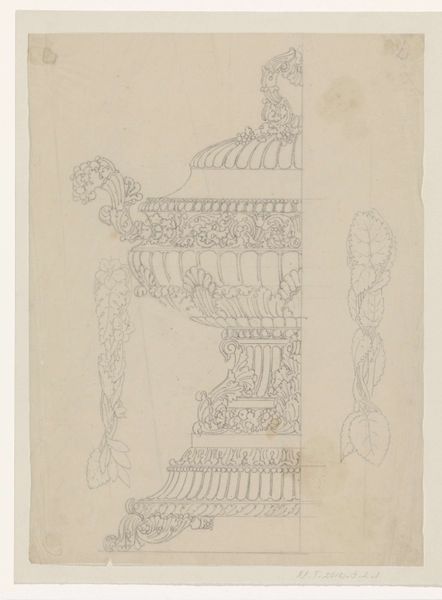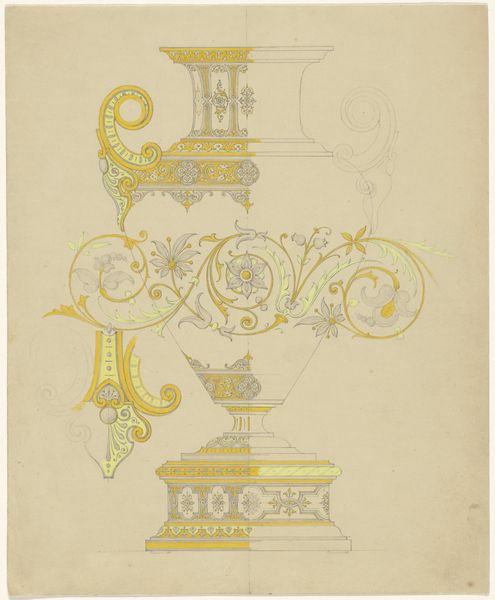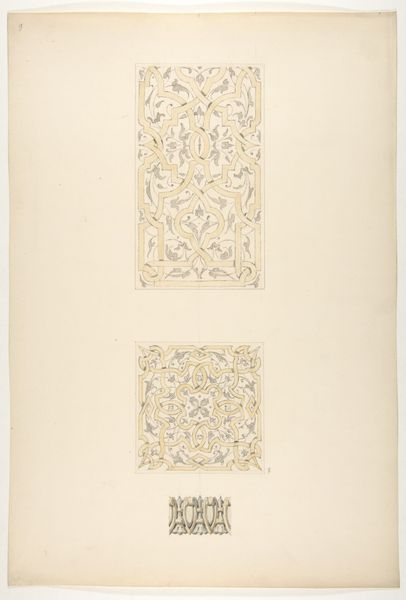
Stationary for Engraving, Embossing and Ornamental Printing Establishment 1800 - 1900
0:00
0:00
Dimensions: Sheet: 9 15/16 × 16 7/16 in. (25.3 × 41.8 cm)
Copyright: Public Domain
Curator: Immediately, I see a design seemingly plucked from the age of industry aspiring for artistic grandeur. Editor: And speaking of grandeur, we're looking at a drawing called "Stationary for Engraving, Embossing and Ornamental Printing Establishment," dating from the late 1800s. It's currently held at the Metropolitan Museum of Art. The details and labor required for each piece seems excessive. Curator: Indeed. I find it fascinating how, in an era of burgeoning mass production, there was this simultaneous embrace of highly ornamented, almost bespoke designs, often incorporating hand-done aspects into printed products. What semiotic reading might that promote within late Victorian Society? What power do images exert here? Editor: I notice immediately the incorporation of swirling gilded borders that look vaguely floral mixed with metallic flourishes framing the company’s title and location on Mount Street in Nottingham. These curling designs harken back to earlier illuminated manuscripts, blending hand-rendered elegance with the mechanization that this very company enables. Curator: Note, also, that feminine form amidst those gilded arabesques on the side border. Considering the social and legal realities for women at the end of the nineteenth century, what statements is this artistic work advancing? To what extent are we simply seeing conventional allegories, or something further? Editor: Symbolically, gold is often connected with luxury, divinity, and higher spiritual ideas across cultures. Here, however, it advertises, which lowers the lofty symbolic heights it has usually known. But, the business needs to associate itself with value and excellence, no? Curator: Precisely. And those script and typography choices… Aren't they evocative of a society obsessed with rank and pedigree? Think how this design serves to attract a very particular clientele: people who cherished aesthetics but likely cared, at least, as much for the impressions they would send in social communication, no? Editor: A lasting impression certainly requires symbols to be legible across diverse cultural interpretations. And, as we've discovered, designs like this contain volumes about the social values that informed their creation and function, giving this artifact even greater eloquence for contemporary interpretations. Curator: So true; designs, then and now, provide vital lessons about any intersectional reading that can deconstruct these past conventions to discover pathways towards alternative contemporary ones.
Comments
No comments
Be the first to comment and join the conversation on the ultimate creative platform.
